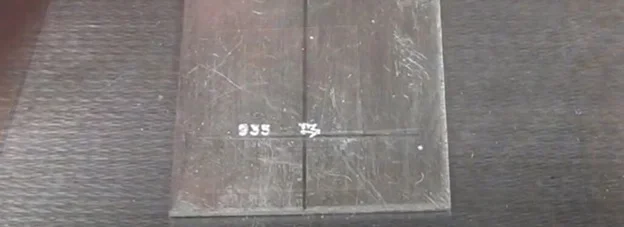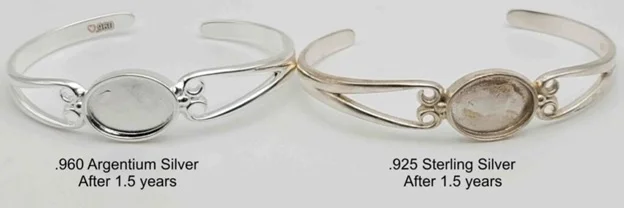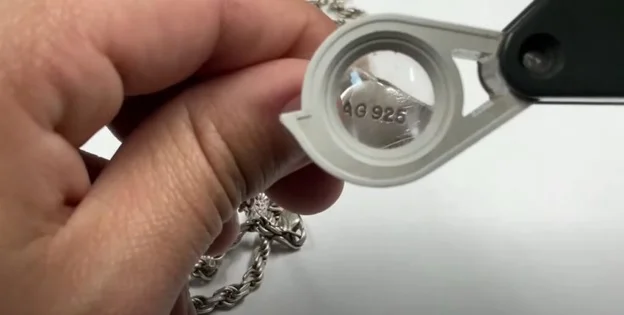Silver has been a popular metal for centuries, valued for its beauty, malleability, and versatility. In the jewelry industry, silver is often alloyed with other metals to enhance its durability, as pure silver is too soft for everyday use. Two common alloys are 925 silver and 935 silver, both of which contain high amounts of pure silver but differ slightly in composition and characteristics. In this article, we’ll explore these differences and help you decide which silver alloy is best for your needs.
What is 925 Silver
925 silver, also known as sterling silver, is a widely used silver alloy that contains 92.5% pure silver and 7.5% other metals, usually copper. This composition enhances the strength and durability of the metal while retaining its beautiful appearance.
History and Origin
The use of 925 silver dates back to the 12th century in Europe. Sterling silver quickly became a standard for jewelry and other decorative items due to its balance of purity and durability. Its hallmark, “925,” is stamped on silver pieces to indicate the purity of the silver content.
Common Uses
925 silver is used for a wide range of applications, including: Jewelry such as rings, necklaces, earrings, and bracelets ,Silverware , Decorative home items like picture frames and candle holders
Durability and Longevity
One of the primary reasons for alloying silver with other metals, particularly copper, is to enhance its strength. Pure silver is too soft to hold its shape over time, but when mixed with copper, it becomes more resistant to bending, scratching, and everyday wear and tear.
Tarnish Resistance
While the addition of copper improves the durability of 925 silver, it also makes it more prone to tarnishing. Over time, sterling silver may develop a tarnished surface due to exposure to air, moisture, and other environmental factors. However, regular cleaning and polishing can restore its shine.
Popularity
925 sterling silver is a global standard for high-quality silver jewelry. It is affordable, durable, and visually appealing, making it a favorite among both consumers and jewelry designers.
What is 935 Silver
935 silver is a less common alloy that contains 93.5% pure silver and 6.5% other metals, often a combination of copper and other trace elements. Although it has a higher silver content than 925 sterling silver, it is not as widely used, but it offers some unique benefits.
Origin
While 935 silver is not as universally recognized as 925 sterling silver, some countries and specific jewelry designers use it to achieve a higher silver purity in their products. Its hallmark “935” indicates the increased silver content.

Common Uses of 935 Silver
935 silver is often found in High-end jewelry pieces, Watches and watch components and Collectible and luxury items
Durability
Like 925 silver, 935 silver benefits from added metals to increase its strength. The 1% increase in silver content does not drastically change its durability, but the slightly higher purity may contribute to a softer metal that is less resistant to damage than 925 silver.
Tarnish Resistance
The higher silver content in 935 silver may give it a marginally better resistance to tarnishing, as silver itself tarnishes more slowly than copper. However, this difference is subtle, and both 925 and 935 silver will require regular maintenance to prevent tarnish.
Comparison Between 925 Silver and 935 Silver
Silver Content
The primary difference between 925 silver and 935 silver is their silver content. While 925 silver contains 92.5% pure silver, 935 silver contains 93.5%. This 1% difference might not seem like much, but it can have some impact on the properties of the metal, such as its appearance and workability.
Aesthetic Appearance
To the untrained eye, there is little visual difference between 925 and 935 silver. Both have a bright, shiny appearance that is characteristic of high-purity silver alloys. Some enthusiasts might argue that 935 silver has a slightly whiter or more brilliant luster due to its higher silver content, but this difference is subtle.
Cost and Affordability
935 silver is typically more expensive than 925 silver, mainly due to the higher percentage of pure silver. However, the price difference is not significant, and for many buyers, 925 silver offers an excellent balance between quality and affordability.
Durability
Because 925 silver contains a slightly higher proportion of copper, it tends to be more durable than 935 silver. Copper enhances the strength of the alloy, making 925 silver more resistant to dents and scratches. 935 silver, with its higher silver content, may be marginally softer, but both alloys are suitable for everyday wear when properly cared for.
Tarnishing
Both 925 and 935 silver are prone to tarnishing due to their copper content. While the higher silver content in 935 silver may offer slightly better resistance, both alloys will tarnish over time without proper care. Regular polishing and cleaning will help maintain the shine and prevent oxidation.

Popularity in Jewelry
925 silver is far more commonly used in jewelry making than 935 silver. Its established reputation as the standard for sterling silver, combined with its affordability and durability, makes it the go-to choice for most jewelry designers. 935 silver, on the other hand, is often reserved for higher-end or custom jewelry pieces where a slightly higher silver content is desired.
Weight
The difference in silver content between 925 and 935 silver does not significantly impact the weight of the metal. Both alloys are lightweight and comfortable for jewelry wearers, and any variation in weight would be negligible.
Workability
Both 925 and 935 silver are malleable metals that are easy for jewelers to work with. The slight difference in silver content does not dramatically affect their workability, and both alloys can be shaped, soldered, and polished with ease.
Hallmarking
925 silver is stamped with the hallmark “925” to indicate its silver content, while 935 silver is marked with “935.” These hallmarks serve as indicators of the purity of the silver used in each piece of jewelry
Care and Maintenance
Both 925 and 935 silver require proper care to maintain their appearance and prevent tarnish. Regular cleaning with a soft cloth and silver polish can help remove tarnish and restore shine. It’s also important to store silver jewelry in a cool, dry place and avoid exposure to harsh chemicals like chlorine and sulfur..
Pros and Cons of 925 Silver
Pros:
- Affordable and widely available.
- Durable and resistant to everyday wear.
- Recognized and trusted standard for silver jewelry.
- Easy to work with for jewelers.
Cons:
- Prone to tarnish due to copper content.
- May develop a patina over time, requiring regular cleaning.
Pros and Cons of 935 Silver
Pros:
- Higher silver content offers a slightly whiter shine.
- Potentially more tarnish-resistant than 925 silver.
- Great for high-end, exclusive jewelry pieces.
Cons:
- Less commonly available than 925 silver.
- Slightly softer and more prone to dents and scratches.
- More expensive due to the higher silver content.
Conclusion
In the battle of 925 Silver vs 935 Silver, both alloys offer high-quality silver options, but the choice ultimately depends on your personal preferences and needs. 925 silver is a widely recognized standard for durable, affordable jewelry, while 935 silver offers a slightly higher purity and a luxurious shine. Whether you prioritize budget, durability, or aesthetic appeal, both alloys provide excellent options for silver lovers.
If you found this article helpful, click here for more.









